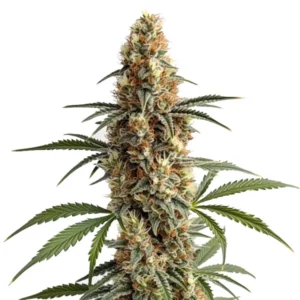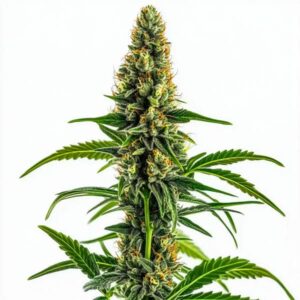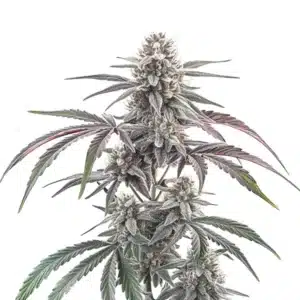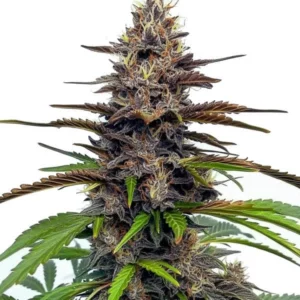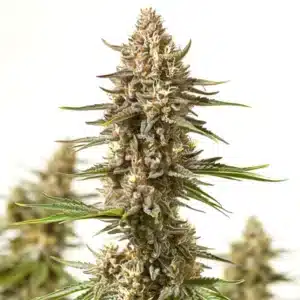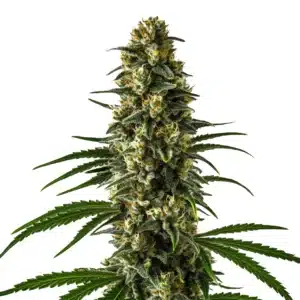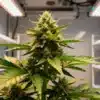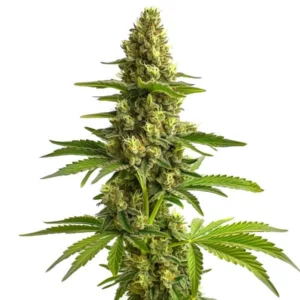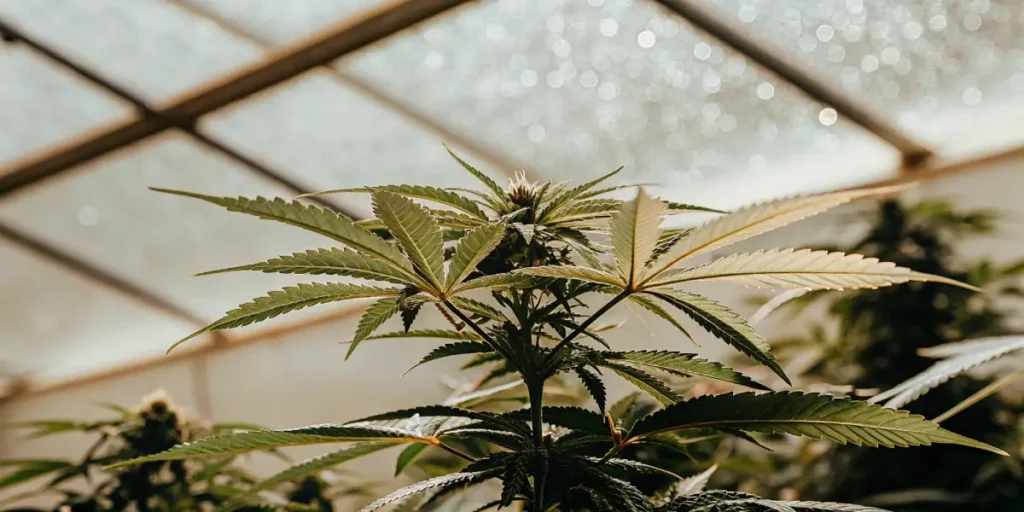
Best Watering Schedule for Cannabis Plants
Watering your cannabis plants correctly can be the difference between a healthy crop and a disappointing harvest. Finding the best watering schedule for cannabis plants involves considering various factors like the plant’s life stage, the environment, and the strain you are growing. Whether you’re a first-time grower or have years of experience, knowing the optimal cannabis plant watering routine is crucial.
When planning your irrigation schedule, keep in mind that cannabis plants have different needs during their growth stages. A seedling will not require the same amount of water as a mature plant. The key is to observe and adjust as your plants develop. For instance, the Mamba Negra strain from Blimburn Seeds, known for its resilience, may require less frequent watering compared to more delicate strains.
Recommended Strains
Mamba Negra
|
|
THC | 18% (Medium) |
|
|
Type | Feminized |
|
|
Yield | High |
|
|
Phenotype | 55% Indica / 45% Sativa |
Mamba Negra CBD
|
|
CBD | 10% – 20% (Medium) |
|
|
Type | CBD Feminized |
|
|
Yield | High |
|
|
Phenotype | 70% Indica / 30% Sativa |
Environmental factors such as humidity and temperature also play a significant role. Indoor growers often ask how often to water cannabis indoors, and the answer can vary based on these conditions. If you’re growing in a dry area, your plants might need more frequent watering. By staying observant and responsive, you can tailor the best watering schedule for cannabis plants in your specific setup.
Knowing your environment is crucial. High humidity can lead to less frequent watering needs, while dry conditions may require a more frequent schedule. An optimal cannabis plant watering routine considers these factors to prevent over or under-watering. Knowing your plant’s specific requirements at different stages will help you create a more effective watering plan.
Moreover, the best watering schedule for cannabis plants often involves a balance between deep watering and allowing the soil to dry out slightly between sessions. This encourages roots to grow deeper and stronger, promoting overall plant health. Regularly adjusting your watering routine based on plant response is key to achieving the best results.
Factors Affecting Watering Schedules
Several factors can influence your cannabis plant watering timing guide. It’s not just about the quantity of water but also about timing and consistency. The growth stage of your plant is a primary consideration. Young plants have smaller root systems and therefore require less water.
Another factor to consider is the type of medium you are using. Soil, coco coir, and hydroponic setups all have different water retention properties. For example, if you’re using coco coir with the Bruce Banner 3 strain from Blimburn Seeds, you could water more frequently compared to soil, as coco dries out faster.
The size of your container also affects how often you need to water. Larger pots tend to retain moisture longer, meaning you might not need to water as frequently. Conversely, smaller pots dry out faster, requiring more regular attention. Knowing these nuances can help you develop the best irrigation schedule cannabis growth demands.
Temperature fluctuations can also impact your watering schedule. Warmer temperatures often increase water evaporation, meaning your plants may need more frequent watering. By using a consistent cannabis plant watering timing guide, you can better manage these environmental changes and maintain healthy plant growth.
Promos & Deals
Watering Schedule for Different Stages of Growth
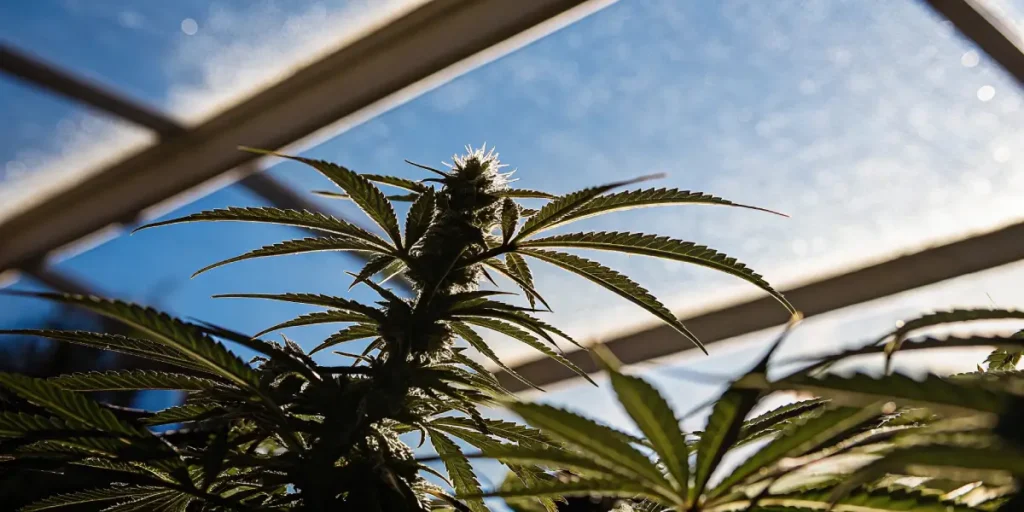
Seedling Stage
At the seedling stage, cannabis plants are delicate and need careful attention. The best irrigation schedule for this stage involves light, frequent watering. Seedlings have small root systems that can easily become waterlogged, leading to root rot. To avoid this, use a spray bottle to mist the soil lightly until it’s just damp.
The Jack Herer strain from Blimburn Seeds is an excellent choice if you’re just starting out. This strain is hardy and forgiving, making it a great option for beginners. Keep the humidity high and the soil slightly moist, but not soaked.
Seedlings thrive in a stable environment where conditions such as light, temperature, and humidity are carefully controlled. This stability is part of an optimal cannabis plant watering routine that ensures young plants develop strong roots without the risk of overwatering.
Furthermore, monitoring the moisture levels in your growing medium is crucial. Over-saturating the soil at this stage can lead to damping-off, a condition that can quickly kill seedlings. By adhering to a consistent cannabis plant watering timing guide, you can prevent such issues and support healthy growth.
Vegetative Stage
During the vegetative stage, your plants will require more water as they grow larger and develop more foliage. This is when the cannabis plant watering timing guide becomes essential. Check the top inch of the soil; if it’s dry, it’s time to water. It’s important to water deeply but less frequently to encourage the roots to grow downwards.
Using the Mamba Negra strain, consider watering every 2-3 days, depending on the conditions. If you notice the leaves drooping slightly, it could be a sign that your plant needs water. Conversely, if the leaves are wilting and the soil is wet, you’re overwatering.
Ensuring a deep watering routine helps in developing a robust root system, which is vital for nutrient uptake and overall plant health. The best watering schedule for cannabis plants during this stage balances the need for moisture with the avoidance of waterlogging.
Additionally, maintaining the right level of moisture in the soil can prevent nutrient lockout, which occurs when roots are unable to absorb nutrients due to wet conditions. By following a well-planned cannabis plant watering timing guide, you can maximize growth during the vegetative stage.
Flowering Stage
As your plants enter the flowering stage, their water needs change again. The cannabis watering schedule for the flowering stage should be adjusted to account for the plant’s increased nutrient uptake. Watering should be less frequent but more substantial.
For strains like Bruce Banner, increase the watering amount while spacing out the schedule. This allows the plant to absorb more nutrients, which is crucial for bud development. Test the soil moisture by sticking a finger into the soil. If it’s dry up to the first knuckle, it’s time to water.
During flowering, it’s crucial to avoid overwatering to prevent mold growth on developing buds. Adopting the best irrigation schedule cannabis growth requires during this stage can significantly influence the quality and quantity of your harvest.
Moreover, adjusting the watering schedule to meet the specific needs of your strain can enhance resin production and overall bud quality. A well-managed cannabis watering schedule for flowering stage is essential for optimizing the plant’s yield and potency.
Common Watering Mistakes
One common mistake is overwatering, which can suffocate roots and lead to nutrient deficiencies. To avoid this, ensure that your pots have good drainage and that you’re not watering too frequently. If you’re growing indoors, be extra cautious about how often to water cannabis indoors, as indoor environments can vary greatly.
Another mistake is using water with incorrect pH levels. Cannabis plants prefer a pH between 6.0 and 7.0. Using water outside this range can lock out nutrients, leading to deficiencies. Always check the pH of your water before applying it to your plants.
Inconsistent watering schedules can also lead to unnecessary stress on your plants. Maintaining a regular cannabis plant watering timing guide helps ensure that your plants receive a consistent supply of water and nutrients, promoting steady growth.
Additionally, not allowing the soil to dry out between waterings can create an environment conducive to root diseases. By following a well-informed irrigation routine, you can prevent such issues and maintain the best watering schedule for cannabis plants.
Tips for a Successful Watering Schedule
- Use a pot with good drainage to prevent waterlogging.
- Check the soil moisture before watering.
- Adjust your schedule based on environmental conditions.
- Monitor plant health and make changes as needed.
- Consider the specific needs of the strain you are growing.
Choosing the right strain can also influence your watering routine. For instance, a strain like Jack Herer from Blimburn Seeds might have different water requirements compared to other strains. Always consider the specific characteristics of your strain when determining the best watering schedule for cannabis plants.
Incorporating tools such as moisture meters can provide more accurate readings of soil moisture, helping you refine your watering schedule. This can be particularly useful in setting the best irrigation schedule cannabis growth requires, ensuring your plants thrive.
Additionally, maintaining a grow journal to record your watering schedule and plant responses can provide valuable insights over time. By analyzing this data, you can continually improve your routine, achieving the optimal cannabis plant watering routine for your setup.
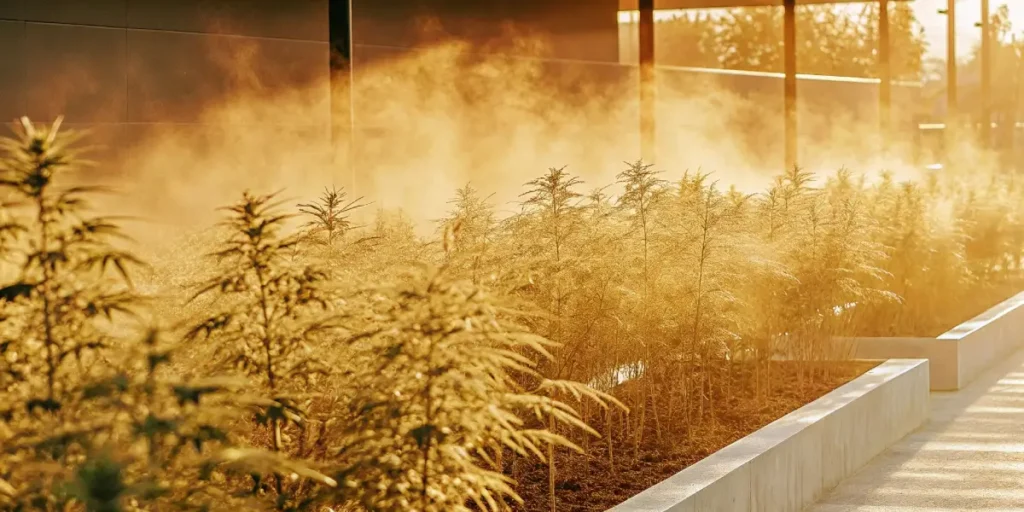
FAQs
How often should I water my cannabis plants indoors?
Watering frequency for indoor cannabis plants depends on several factors, including the size of your pots, the type of soil or medium, and the specific strain. Generally, indoor plants require watering every 2-3 days during the vegetative stage and slightly less often during flowering. Always check the soil moisture before watering to avoid overwatering.
If you’re using a fast-draining medium like coco coir, you may need to water more frequently. Strains such as Mamba Negra from Blimburn Seeds may have different needs compared to other strains, so adjust your schedule accordingly. Monitoring your plants and environment is key to determining the optimal cannabis plant watering routine.
It’s important to adapt your watering schedule to the specific needs of your indoor environment. Factors such as lighting intensity and ventilation can impact how often to water cannabis indoors, making it essential to regularly assess your plants’ requirements.
Furthermore, knowing the signs of over and under-watering—such as leaf droop or soil dryness—can help you fine-tune your routine, ensuring the best watering schedule for cannabis plants in any indoor setting.
What is the best watering schedule for cannabis plants during the flowering stage?
The flowering stage demands a more controlled and precise watering schedule. Typically, you should water less frequently but with more volume. This allows the plant to uptake nutrients efficiently, aiding in bud development. Check the soil moisture and only water when it’s dry up to the first knuckle.
Strains like Bruce Banner 3 may require a slightly different schedule due to their unique characteristics. Pay attention to the plant’s response and adjust your watering routine as needed. This approach will help you establish the best watering schedule for cannabis plants during this crucial stage.
During flowering, maintaining a consistent cannabis watering schedule for flowering stage is crucial to prevent nutrient imbalances. Monitoring the plant’s response to watering can help you make necessary adjustments, optimizing growth and bud production.
Additionally, providing adequate drainage and airflow around your plants can prevent common issues such as root rot and mold, ensuring a successful harvest. A carefully managed watering schedule is key to achieving the best results during the flowering stage.
Can I use tap water for my cannabis plants?
Tap water is often suitable for cannabis plants, but it’s important to check its pH and chlorine content. Cannabis plants prefer a pH range of 6.0 to 7.0. If your tap water falls outside this range, consider using a pH adjuster. Additionally, let tap water sit for 24 hours to allow chlorine to evaporate before use.
Some strains, like Jack Herer, may be more forgiving of water quality, but it’s always best to use the cleanest water possible. By ensuring the right water quality, you can maintain the best irrigation schedule cannabis growth requires.
In regions where tap water is heavily treated, the presence of high levels of chlorine and chloramine can be detrimental to plant health. Using filtration systems or allowing water to stand can mitigate these effects, supporting an optimal cannabis plant watering routine.
Regularly testing your water source can also prevent potential issues such as nutrient lockout, ensuring that your cannabis plants receive the best care possible. This attention to detail in your watering routine can significantly impact overall plant health and yield.
What signs indicate that I am overwatering my cannabis plants?
Overwatering can manifest as drooping leaves, yellowing, and stunted growth. If the soil remains wet for extended periods and you notice these symptoms, it’s a clear sign of overwatering. Ensure your pots have adequate drainage to prevent this issue.
To remedy overwatering, reduce the frequency of watering and improve airflow around your plants. Consider the type of strain, as some like Mamba Negra may require different care. Adjusting your routine will help you achieve the best watering schedule for cannabis plants.
Improper watering can also lead to other issues such as root rot, which can severely impact plant health. By following a consistent cannabis plant watering timing guide, you can avoid these pitfalls and maintain a thriving garden.
Monitoring the weight of your pots before and after watering can provide a more accurate indication of moisture levels, helping you refine your watering strategy. This proactive approach is essential for maintaining the best watering schedule for cannabis plants.
How can I improve water drainage for my cannabis plants?
Improving drainage is essential to prevent root rot and other issues related to overwatering. Start by using pots with drainage holes and adding a layer of gravel or perlite at the bottom. This helps excess water escape quickly.
Choosing the right soil mix can also make a big difference. A mix with perlite or vermiculite will improve aeration and drainage. For strains like Bruce Banner, this can be particularly beneficial, allowing you to maintain a healthier watering schedule.
Incorporating raised beds or fabric pots can also enhance drainage, providing better air circulation around the root zone, which is crucial for maintaining an optimal cannabis plant watering routine.
Experimenting with different soil amendments can further improve drainage and nutrient retention, allowing for a more tailored approach to the best watering schedule for cannabis plants. Regularly reviewing and adjusting your setup can lead to improved plant health and productivity.


